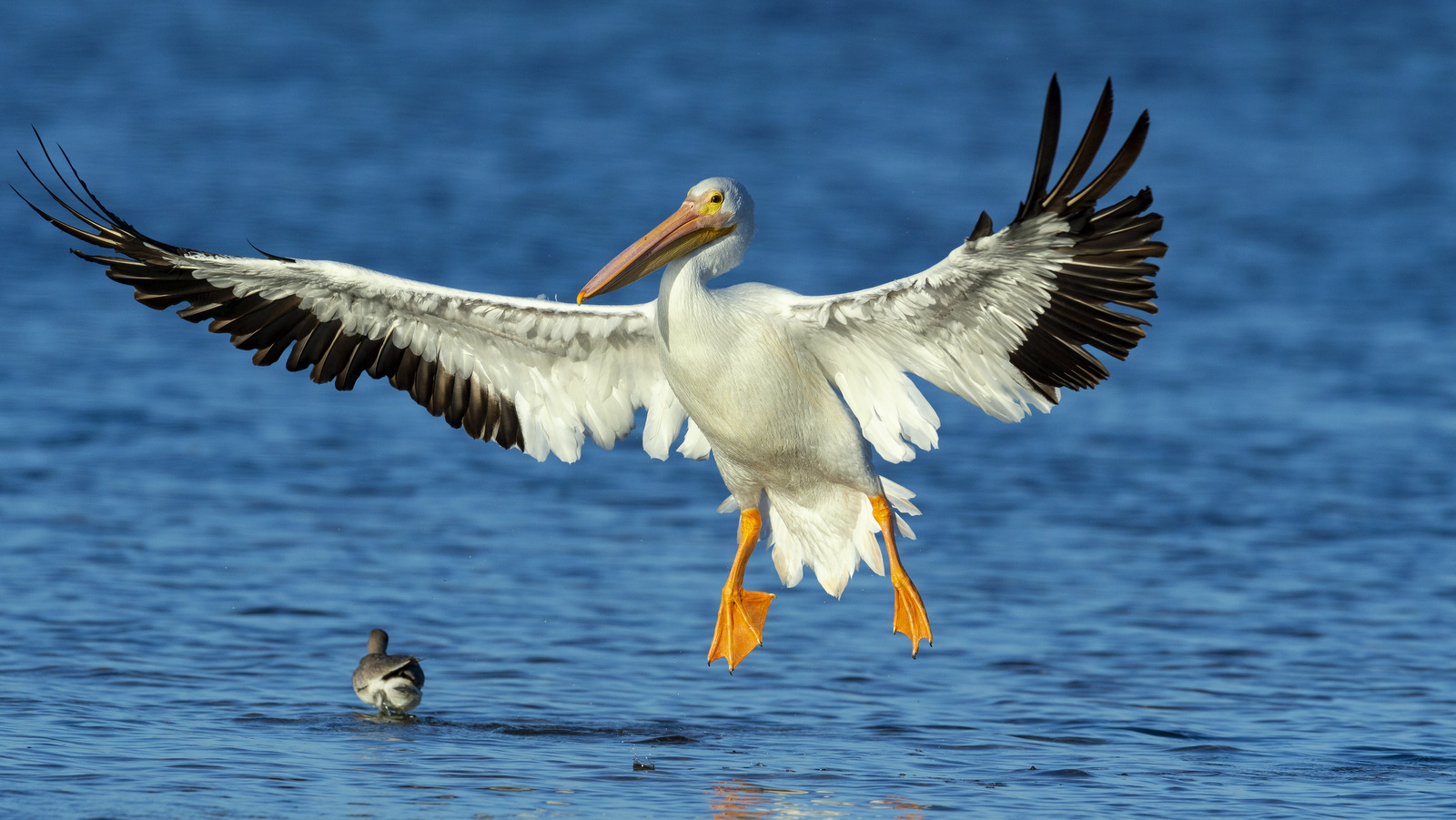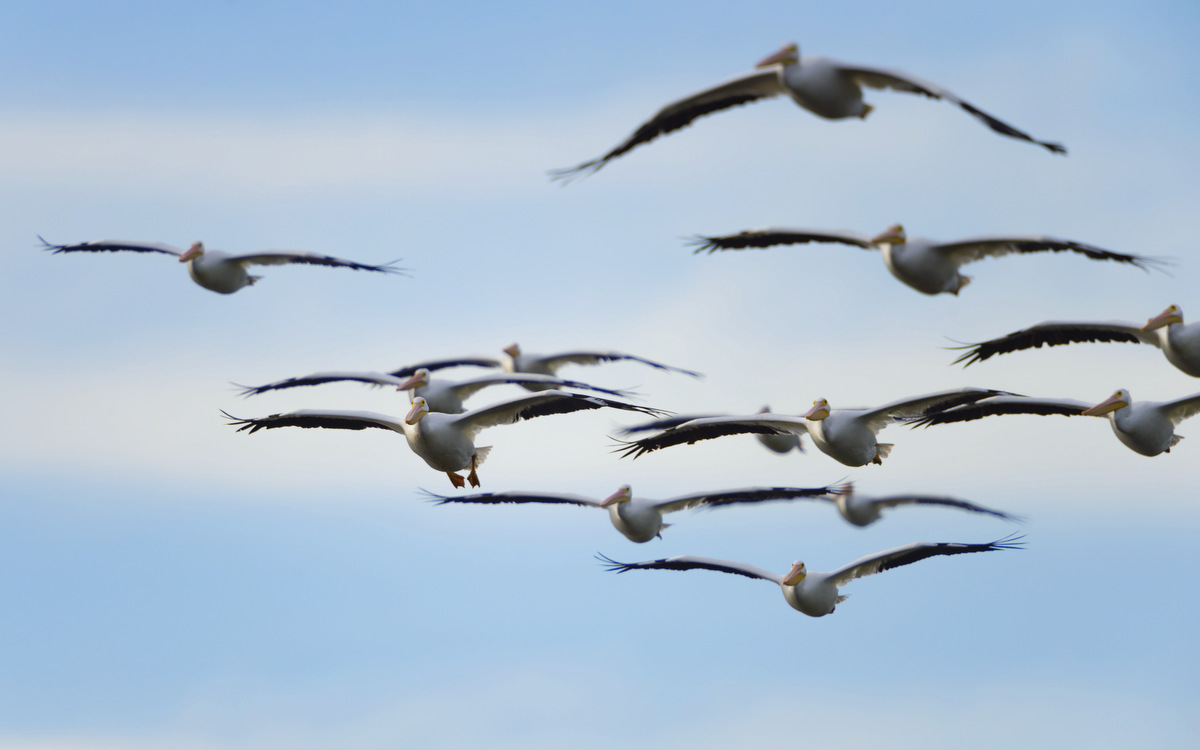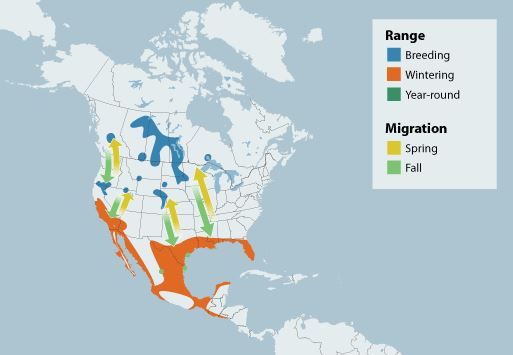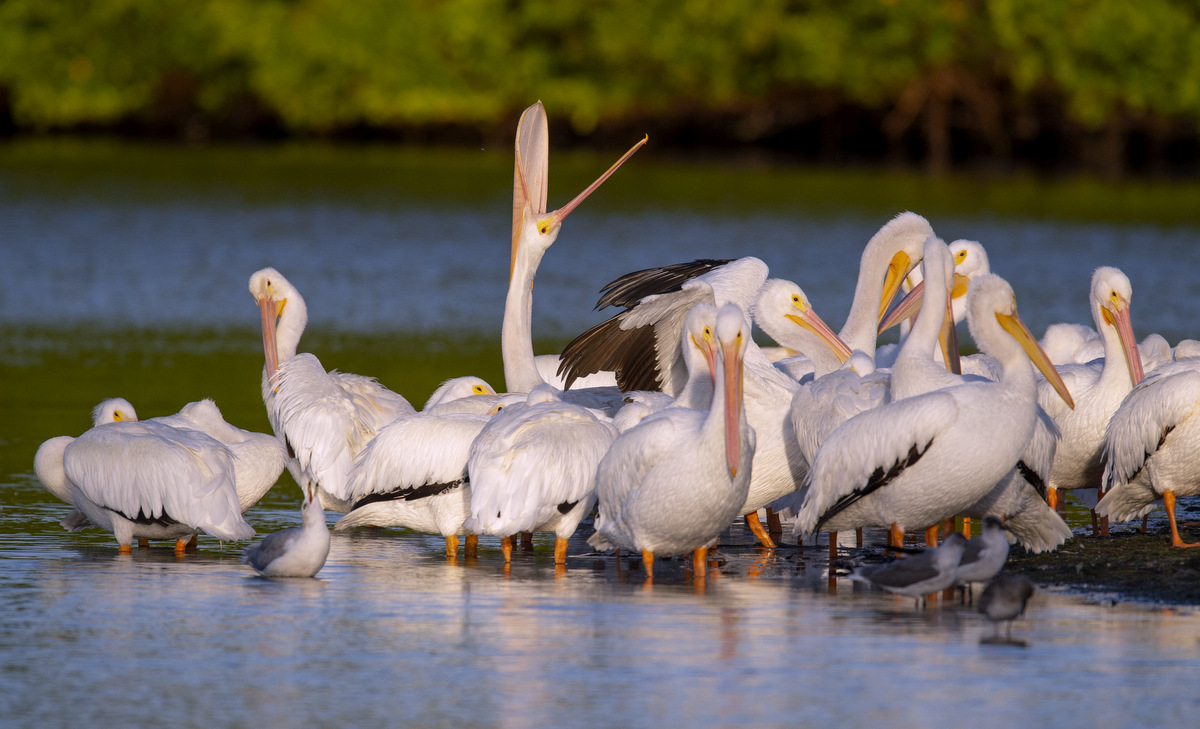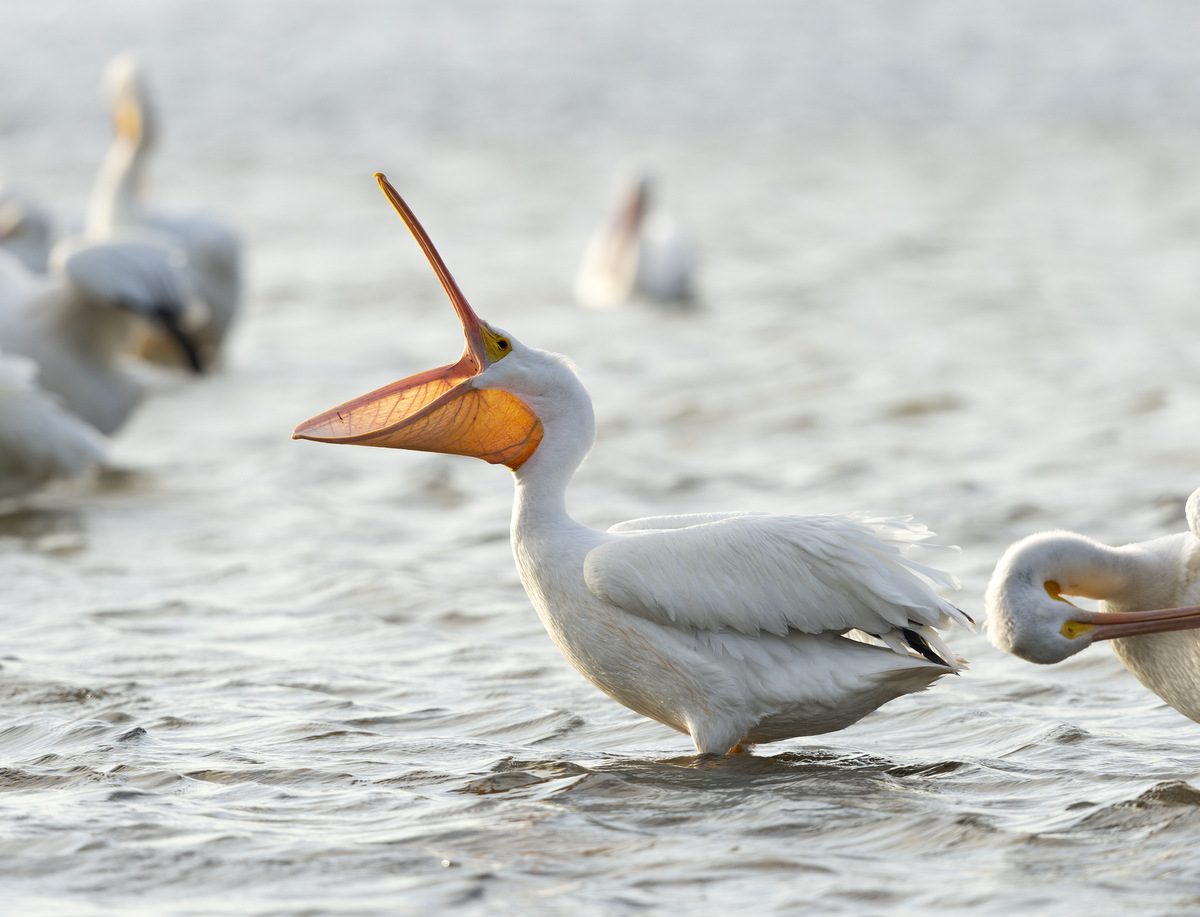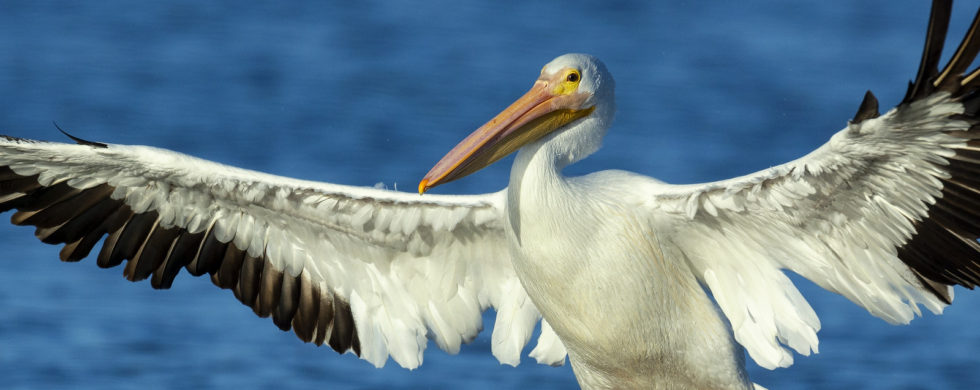
31
2018Snowbird?
Shot of the Month – December 2018
In North America, a snowbird is a slang term used to describe someone (often a retiree) who migrates each winter from his northerly, typically very cold home state to spend the winter in a warmer state like Florida or Arizona. While living in Vermont – a very northerly, and VERY coldly state in the winter, we adopted some sunbird-esque habits and spent Christmas visiting family in Florida two years in a row. These trips allowed me the opportunity to photograph a range of wildlife in Ding Darling Nature Reserve. During one outing I captured a photo of a big bird — not THE Big Bird, but his cousin, the American White Pelican (AWP).
How big? Well, the AWP has a nine-foot wingspan, which you can see in all its glory in the image above. A male can stand almost 4 feet tall and can weigh thirty pounds! That massive bill can add almost another 2 feet to the length of this bird. These Goliaths are among the heaviest flying birds in the world. Despite their size, those massive wings allow the pelican to excel at soaring and they can be seen traveling long distances in V-formation.
These birds breed and spend the warmer months in the heart of northern North America and spend the colder months in warmer locales as you can see in this range map.
The AWP is very gregarious and they often travel and forage in large flocks. Some pelican species plunge-dive to catch their prey — not these guys. The AWP feeds from the water’s surface, dipping their beaks into the water to catch fish and other prey. The birds will often work together to corral fish to one another. Sometimes a group of birds will dip their bills into the water together and flap their wings to drive fish toward the shore where the water is shallow. This then allows for a very efficient, collective feast.
The American White Pelican can eat up to four pounds of food a day with fish (carp, Tuie chub, shiners, perch, rainbow trout, jackfish, catfish, etc.) being the preferred meal. The AWP is not above theft, known as kleptoparasitism in the animal world, to catch a meal and they can often be seen stealing fish from other pelicans, gulls, and cormorants.
Once a fish, or two, has been caught the pelican will raise its bill to drain the water and swallow the prey.
Gregarious, larger than life, a healthy appetite, and seasonal migrations — it sounds like this pelican might be a subspecies of snowbird. If you get my drift….. 😉
Until next month…
Nikon D4S, Nikon 600mm, 1.4X TC (effective 850 mm), 1/2500 sec, ISO 400, -1 EV

